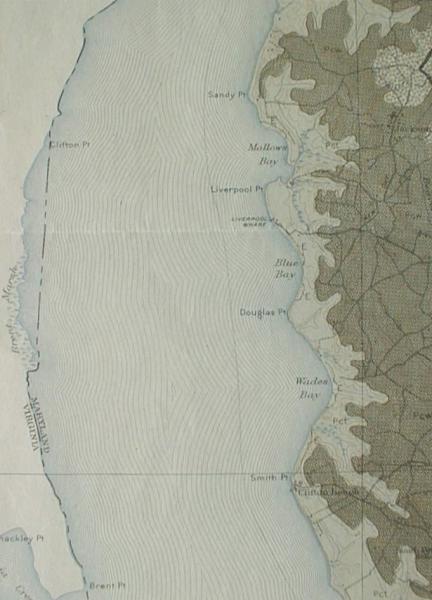The Wooden Ships of Mallows Bay
Today, a fleet of sunken ships. The University of Houston's College of Engineering presents this series about the machines that make our civilization run, and the people whose ingenuity created them.
It is a widely accepted but seldom supported claim that war drives invention. War is a time of intense action, no doubt. But completing the process of invention takes delicate interactions among inventors, builders, and users. That synergy gets terribly compressed in time of war, and strange things happen.
Historian Donald Shomette tells a story of how that process went wrong in WW-I. He begins by showing a low aerial photo of Mallows Bay, off the Potomac River south of Washington, DC. There, in those obscure marshy waters, are outlines of countless ship hulls. Everything above water is gone, and aquatic shrubbery grows out of the decaying wood that defines the old hulks at the waterline.
When we entered WW-I in 1917, we had to get a well-supplied army to France as soon as possible. Suddenly we needed to build ten times the shipping capacity we'd produced so far in the 20th century. Our shipyards were tied up making warships. What to do? We came up with an off-the-wall plan to set up 35 new shipyards to build 731 wooden ships. That way we wouldn't get in the way of warship building. The plan was a lot like the Liberty-ship effort of WW-II. We selected a simple plodding design -- a 300-foot merchant ship with a 1500 HP steam engine. It was meant to move 10 knots and carry 3500 tons.
Taking a chapter from Ford's assembly line, the ships would to be made of precut parts and assembled around the country. Then, in Shomette's words, "paperwork and bureaucracy proliferated." The first ship was launched in December. It was May before the first sea trial. By the end of the war, 134 wooden steamships were finished, 98 delivered, and almost 263 were still being built.
But all that spending had its own momentum. By late 1919, 264 wooden steamers were in operation. Most had crossed the Atlantic, but they were slow and leaky. They'd been made obsolete by the new Diesel engines. The government finally sold the lot of them off to the Western Marine and Salvage Company for less than a million dollars.
The idea was to strip them of hardware, burn them down to the waterline, haul them off to a nearby marsh, then burn what was left. Once more it all went wrong -- civic protests, problems with blocked shipping lanes, and finally the Great Depression.
Western Marine went bankrupt, and the incomplete destruction still wallows in the Mallows Bay marshes -- a rotting forgotten embarrassment of over 150 ships. The full technological birth process had been circumvented, and the result was a disaster.
Now a new interest rises around those old hulks. Archaeologists and ecologists are studying the glorious ecosystem growing within them. That vast sunken fleet is home to blue herons, osprey, fish, reptiles and mollusks. No more burning or salvage. The ghost fleet has at last found its purpose -- as a wildlife sanctuary.
I'm John Lienhard, at the University of Houston, where we're interested in the way inventive minds work.
(Theme music)
Shomette, D. G., The Ghost fleet of Mallows Bay. American Heritage of Invention & Technology, Winter, 1999, pp. 12-23.
 A view of the Potomac River south of Washington, DC, showing the location of Mallows Bay (the inlet nearest the top, on the right-hand side of the river). This is a portion of a U.S. Coast and Geodetic Survey map provided by Carolyn Meanley, UH Library. For a full-size image, click on the thumbnail to the right.
A view of the Potomac River south of Washington, DC, showing the location of Mallows Bay (the inlet nearest the top, on the right-hand side of the river). This is a portion of a U.S. Coast and Geodetic Survey map provided by Carolyn Meanley, UH Library. For a full-size image, click on the thumbnail to the right.
An odd footnote to this story: A few months after the Shomette article above, the Sunday, January 3, 1999, New York Times (pg. 20) came out with a similar article by Andrew C. Revkin, "In Harbor Mud, Ships of a Vanishing Era May Soon Be Lost Again." Revkin tells about another graveyard for wooden ships off Staten Island.